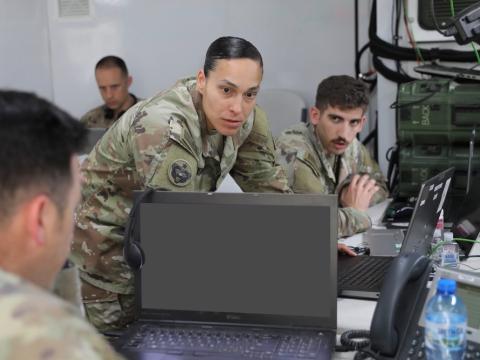Collaboration vs. Communication
Dorobek makes an excellent point when he says that e-mail really did revolutionize the way we communicate, but hasn't done much toward the effort to collaborate. But since we've gotten in the habit of using e-mail to collaborate, for lack of better tools in the '90s, we're still using e-mail to collaborate even though better tools are out there.
Christopher Dorobek waxes nostalgic about his first e-mail account and how he didn't get it at first in this month's Incoming column, "The First Step Toward Collaboration Is to Stop E-Mailing." And he wasn't the only one, he writes:
As shocking as it may seem now, all types of questions arose in agencies about whether e-mail was necessary. The General Services Administration (GSA), under then-administrator David J. Barram, was one of the first agencies to ensure that each person in the organization had e-mail-on Flag Day 1996. The GSA press release headline read, "GSA Employees Join Super Information Highway through Intranet." Barram's quote in the release, dated June 14, 1996, states that, "Using this tool called Internet, companies, governments and individuals around the world are inventing exciting new ways to do their work, improve service to their customers, and communicate with each other," Barram said today. "I believe that use of the Internet will be a key competitiveness factor for GSA in the coming years and that GSA employees must begin to learn how this new resource can change the way we do business."Amusing as hindsight can be, Dorobek makes an excellent point when he says that e-mail really did revolutionize the way we communicate, but hasn't done much toward the effort to collaborate. But since we've gotten in the habit of using e-mail to collaborate, for lack of better tools in the '90s, we're still using e-mail to collaborate even though better tools are out there. He continues:
My challenge to users is to think before sending an e-mail and ask the simple question: "Is this the best tool for what I am trying to accomplish?" In many cases, much better options are available. Blogs can be used for speaking to large groups of people, but they also create a place where a conversation can happen around topics. Wikis are collaborative workplaces where people can share information and ideas. And other capabilities are popping up every day. Better tools for collaboration are available. It is time to thank e-mail and move on.Indeed! Blogs, and wikis, and social bookmarking, and... what else? What we're curious about here in SIGNAL's offices are which tools are most effective in facilitating collaboration? It seems like new ones spring up every day, but this could be a valuable conversation in helping managers understand new collaboration tools.




Comment
Aloha, Helen! Great post.
Good morning Helen! You have
Nice post. Looks like I need
Good relationships promote
Following on Preston's post,
Great posts, I always love
Comments